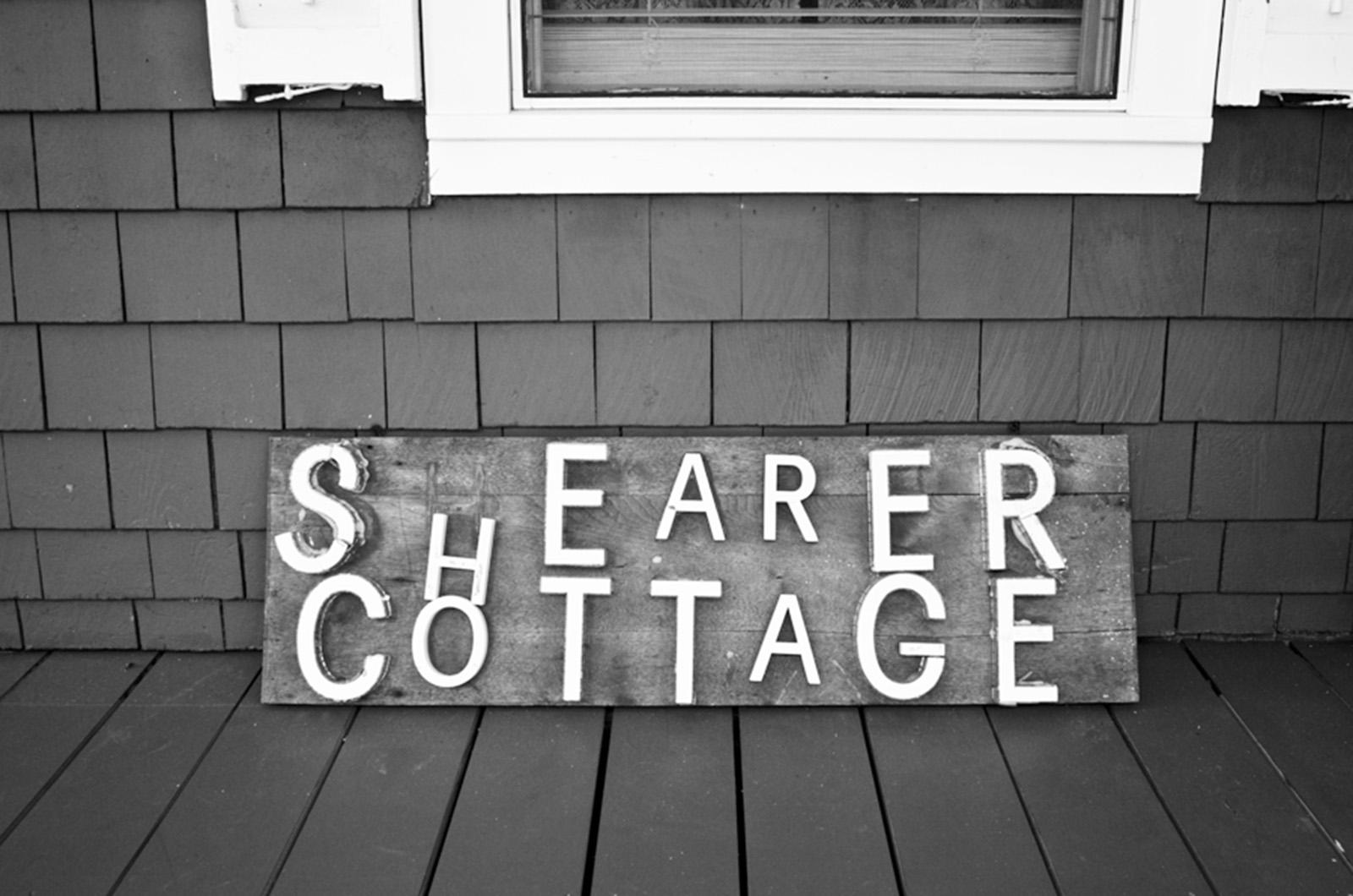From Dorothy West’s Oak Bluffs column in the June 1983 editions of the Vineyard Gazette:
Mrs. Lee Van Allen of Malden and the Vineyard was here for the weekend with her husband David, a Boston architect, their daughter Loren, a high school sophomore this coming school year, their grade school son Eric, as agreeable a youngster as can be found, and their older son David who will be a sophomore at University of Massachusetts Boston, harbor campus this fall, having entered the freshman class last fall with the self-imposed commitment to be as cool as his handsome father.
Lee is a Shearer, by way of her great-grandmother Shearer, the first of that family to discover the Island as one of God’s treasures, and buy a Highlands house at the turn of the century. It is called Shearer Cottage, and the reigning members have converted it and adjoining buildings into utility apartments furnished with satisfied summer guests, who come from all parts of the country, and come again.
Lee’s birthday was Sunday and her husband said they would celebrate it on their return to the city at any restaurant of her choosing. Lee was anticipating an elegant dinner for two in one of Boston’s best hotels, herself and David dressed to match the evening.
Her mother Mrs. Doris Jackson, also of Malden, whose summer cottage is one Wayland avenue, and her mother’s sister, Mrs. Elizabeth White of New York and East Chop, were down for the holiday to open Shearer Cottage for the season and plant summer flowers along its walks, and bask in the joy of working outdoors. It aroused no suspicion in Lee when her husband suggested they stop at Shearer’s to see if her mother and aunt were indoors in need of a helping hand. David drove on the back road to Shearer’s, parked at the rear entrance, then steered Lee through the entryway to the closed door of the common room.
Those inside the room, having heard the purposely loud slam of Dave’s car door, signaled each other to silence. When Lee and David entered the room, and a host of smiling, applauding people, nearly 40 in number, began to chant, “Happy Birthday, Lee,” it was plain to see that this surprise was a total success.
Aside from a sprinkling of older friends to whom Lee had been an enchanting child, and then a favorite young person, the party was a gathering of her peers, most of them cottage owners, who had come to enjoy the holiday and to see how their houses had weathered the winter. The others were their weekend guests, summer familiars, who were biding their time until they became cottage owners, too.
It was a happy birthday, with Shearer hospitality bubbling over, and Lee opening many presents, some of them amusing, some of them charming, and all of them presented with love.
Henry and Helen Scarborough of Rustic avenue in the Camp Ground have returned from Florida to reopen their cottage, Sea Shrimp.
Sea Shrimp, with its twin peaked roofs, pink facade and gingerbread icing is just off busy Lake avenue and an instant attraction to strollers and sightseeing motorists. Many cars and even more people veer off Lake avenue to point their cameras at Sea Shrimp and voice their admiration.
Henry made the gingerbread ornamentation himself. He and Helen have learned that all or most of the Camp Ground cottages had gingerbread in the beginning.
But as the cottages needed painting, and a painter was hired at summer’s end to do the job before the cottager’s arrival the summer following, the painter, with spring at the ready sooner than he was, did not want to take the time, and did not have the time it would take to paint this convoluted frivolity and tore it off. Pieces of gingerbread have been found under porches, in closets, or wherever there was a place to tuck it. The painter could not afford the time to take it to the dump.
The canvas tent that stood where Sea Shrimp now stands was pitched in 1870 and owned by a W. H. Beetle. From 1872 to 1878 it was owned by Thomas E. Norton.
The Methodist ministers, who originated the two-week revivalist meetings, pitched sizable tents for their meetings and smaller tents for their families. The souls who came to be saved brought tents, too. In time the women in the congregation began to make them more homelike for their children with flooring and platforms for porches and a planting of flowers. Then somebody began to think in terms of wooden structures, and the shift to cottages was underway. The lots on which the cottages stand are still recorded as tent lots, owned by the Camp Meeting Association. The land is leased to the cottager who pays the association for that privilege. The taxes on his house are paid to the town and he can move it away if he chooses, because he has total say.
There are now 320 cottages in the Camp Ground, the majority of them owned by descendants of the original families, who keep them in repair, who paint them in delightful colors and know there is always a camera around the corner.
Compiled by Hilary Wallcox
library@vineyardgazette.com




Comments
Comment policy »